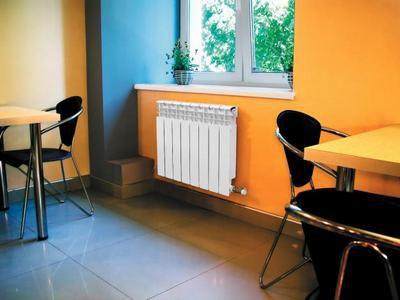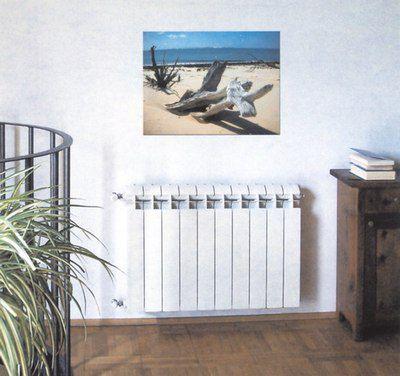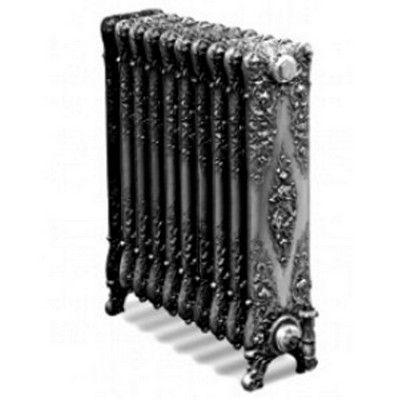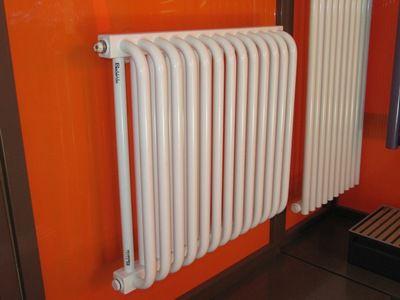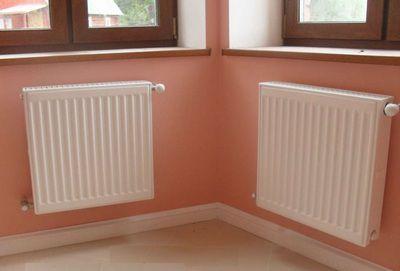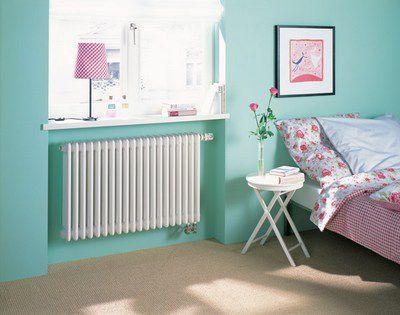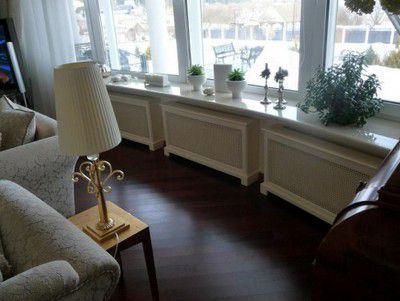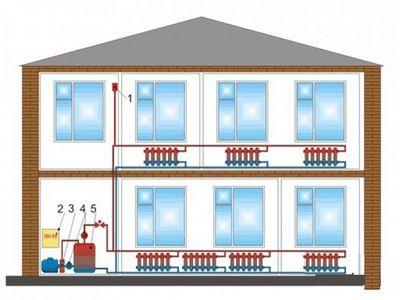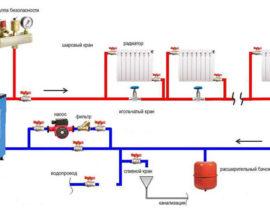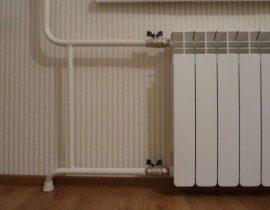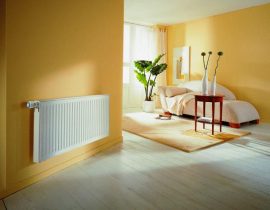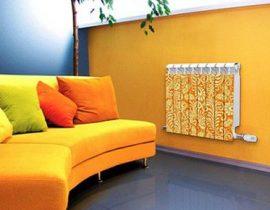For the heating system to work efficiently, it is not enough just to arrange the batteries in the rooms. It is necessary to calculate the number of radiators, with taking into account area and volume premises and power of the furnace or boiler itself. It is also important to take into account the type of battery, the number of sections in each and the speed of delivery of the "working fluid".
To date industry produces several types of radiators, which are performed from different materials, have various shapes and, of course, characteristics. For the efficiency of heating a house, when buying them, you need to take into account all the pros and cons of the models on the market.
The property owner does not have to turn to specialists for help in calculating the number of heating radiators, for this it is enough to be able to use a tape measure, a calculator and a ballpoint pen or pencil! By following our instructions, you will definitely succeed!
Content
Types of radiators
The first thing you need to know is the type and material from which your radiators are made, it is on this, in particular, that their number depends. Available for sale as everyone already familiar cast-iron types of batteries, but significantly improved, as well as modern specimens made of aluminum, steel and, so called, bimetal radiators from steel and aluminium.
Modern battery options are made in a variety of designs and have numerous shades and colors, so you can easily choose those models that are more suitable for a particular interior. However, we must not forget about the technical characteristics of the devices.
- Bimetallic batteries have become the most popular of modern radiators. They are arranged according to the combined principle and consist of two alloys: inside they are steel, outside — aluminum. They attract with their aesthetic appearance, economy in use and ease in operation.
But they also have a weak side. — they are acceptable only for heating systems with sufficiently high pressure, and means, for buildings, connected to central heating in apartment buildings. For buildings with autonomous heating supply, they are not suitable and it is better to refuse them.
- It is worth talking about cast iron radiators. Despite their great "historical experience", they do not lose their relevance. Especially since today you can buy cast-iron options made in various designs, and they can be easily selected for any design. Moreover, such radiators are produced that may well become an addition or even decoration to the room.
These batteries are suitable for both autonomous and central heating, and for any coolant.They warm up longer than bimetallic ones, but also longer time cool down, which contributes to greater heat transfer and the preservation of heat in the room. The only condition for their long-term operation is high-quality installation during installation.
- Steel radiators are divided into two types: tubular and panel.
Tubular options are more expensive, they heat up slower panel, and, accordingly, longer keep the temperature.
Panel — fast heating batteries. They are much cheaper than tubular ones in price, too they heat rooms well, but in the process of their rapid cooling, the room also cools down. Therefore, these batteries are not economical in autonomous heating, as they require an almost constant supply of thermal energy.
These characteristics of both types of steel batteries will directly affect the number of points for their placement.
Steel radiators have a respectable appearance, so they fit well into any style of interior design. They do not collect dust on their surface and are easily put in order.
- Aluminum radiators have good thermal conductivity, so they are considered quite economical. Thanks to this quality and modern design, aluminum batteries have become leaders in sales.
But, when purchasing them, it is necessary to take into account one of their shortcomings. — this is the exactingness of aluminum to the quality of the coolant, so they are more suitable only for autonomous heating.
To calculate how many radiators you need for each of the rooms, have to take into account many nuances, how related to the characteristics of batteries, and others that affect the preservation of heat in the premises.
How to calculate the number of heating radiator sections
In order for heat transfer and heating efficiency to be at the proper level, with calculation size of radiators must be taken into account installation standards, but by no means do not rely on window dimensions openings, under which they are installed.
Heat transfer is affected not her the size, and the power of each individual section, which are assembled into one radiator. Therefore, the best option would be to place several small batteries, distributing them around the room, rather than one large one. This can be explained by the fact that warm will enter the room from different points and evenly warm it up.
Each separate room has its own area and volume, these parameters will depend on calculation number of sections installed in German.
Calculation based on room area
In order to correctly calculate this amount for certain room, you need to know some rules:
You can find out the required power for heating a room by multiplying the size of its area (in square meters) by 100 W, while:
- Increase the radiator power by 20% if two walls of the room face the street, and in German there is one window — it could be an end room.
- By 30% have to increase power if the room has the same characteristics as in the previous case, but it has two windows.
- If the window or windows of the room face the northeast or north, and means, there is a minimum amount of sunlight in it, the power needs to be increased more on 10%.
- The radiator installed in a niche under the window has a reduced heat transfer, in this case have to increase power more by 5%.
- If the radiator is covered with a screen for aesthetic purposes, then heat transfer is reduced by 15%, and her also need to be replenished by increasing the power by this amount.
The specific power of the radiator section must be indicated in the passport, which the manufacturer attaches to the product.
Knowing these requirements, it is possible to calculate the required number of sections by dividing the resulting total value of the required thermal power with taking into account of all the specified compensating corrections, for the specific heat transfer of one section of the battery.
Result calculations rounded up to a whole number, but only up. Let's say there are eight sections. And here, returning to the above, it should be noted that for better heating and heat distribution, the radiator can be divided into two parts, four sections each, which are installed in different places in the room.
It should be noted that such calculations suitable for determining the number of sections for rooms, equipped central heating, the coolant in which has a temperature of no more than 70 degrees.
This calculation counts accurate enough, but you can make calculation and differently.
Calculation of the number of sections in radiators, based volume premises
The standard is the ratio of thermal power of 41 W per 1 cubic meter. meter volume premises, subject to being in German one door, window and outer wall.
To make the result visible, for example, you can calculate the required number of batteries for a room of 16 square meters. m. and ceiling height 2.5 meters:
16 × 2,5= 40 cube.m.
Further you need to find the value of thermal power, this is done as follows
41 × 40=1640 W.
Knowing the heat transfer of one section (her indicated in the passport), you can easily determine the number of batteries. For example, the heat dissipation is 170 W, and comes next calculation:
1640 / 170 = 9,6.
After rounding, the result is 10 - this will be the required number of sections of heating elements per room.
There are also some features:
- If the room is connected to an adjacent room opening, without a door, it is necessary to consider the total area of \u200b\u200btwo rooms, only then the exact number of batteries for heating efficiency will be revealed.
- If the coolant has a temperature below 70 degrees, the number of sections in the battery have to increase proportionally.
- With double-glazed windows installed in the room, heat losses are significantly reduced, and therefore amount there may be fewer sections in each radiator.
- If old cast-iron batteries were installed in the premises, which coped well with creating the necessary microclimate, but there are plans to change them for some modern ones, then calculate how many of them will be needed very simple. One cast iron section has a constant heat output of 150 watts. Therefore, the number of installed cast iron sections must be multiplied by 150, and the resulting number is divided by the heat transfer indicated on the sections of new batteries.
Video: Expert advice on calculating the number of heating radiators in an apartment
If you still do not fully understand how these calculations are made and you do not count on your own strength, you can contact specialists who will make an accurate calculation. calculation and do an analysis taking into account all options:
- features of the weather conditions of the region where the building is located;
- temperature climatic indicators on onbeginning and end of the heating season;
- the material from which the structure was erected and the presence of high-quality insulation;
- the number of windows and the material from which the frames are made;
- height of heated rooms;
- efficiency of the installed heating system.
Knowing all of the above parameters, heating engineers, according to their calculation program with ease calculate the required number of batteries. Such miscalculation With taking into account all the nuances of your home are guaranteed to make it cozy and warmand you and your family are happy!

